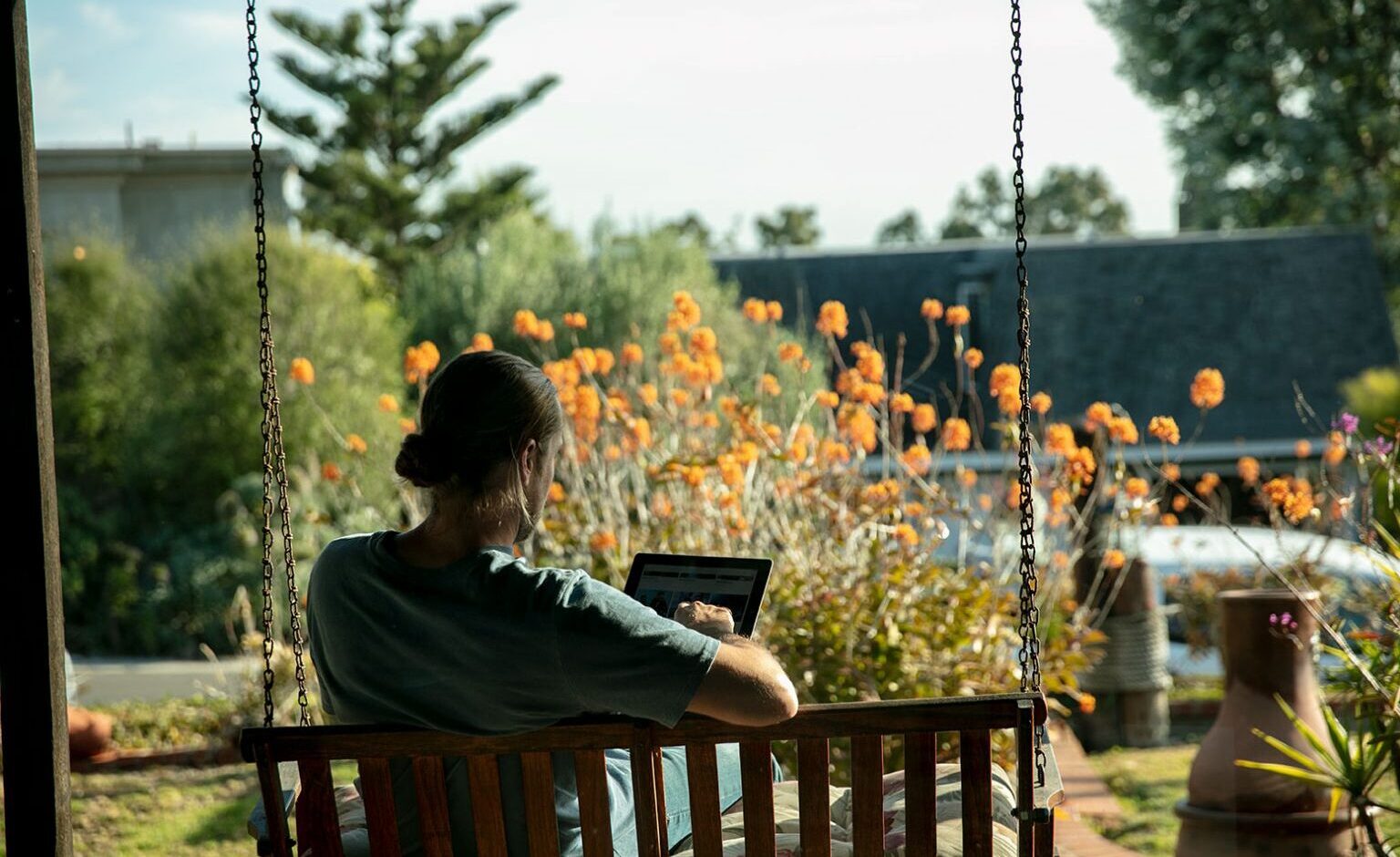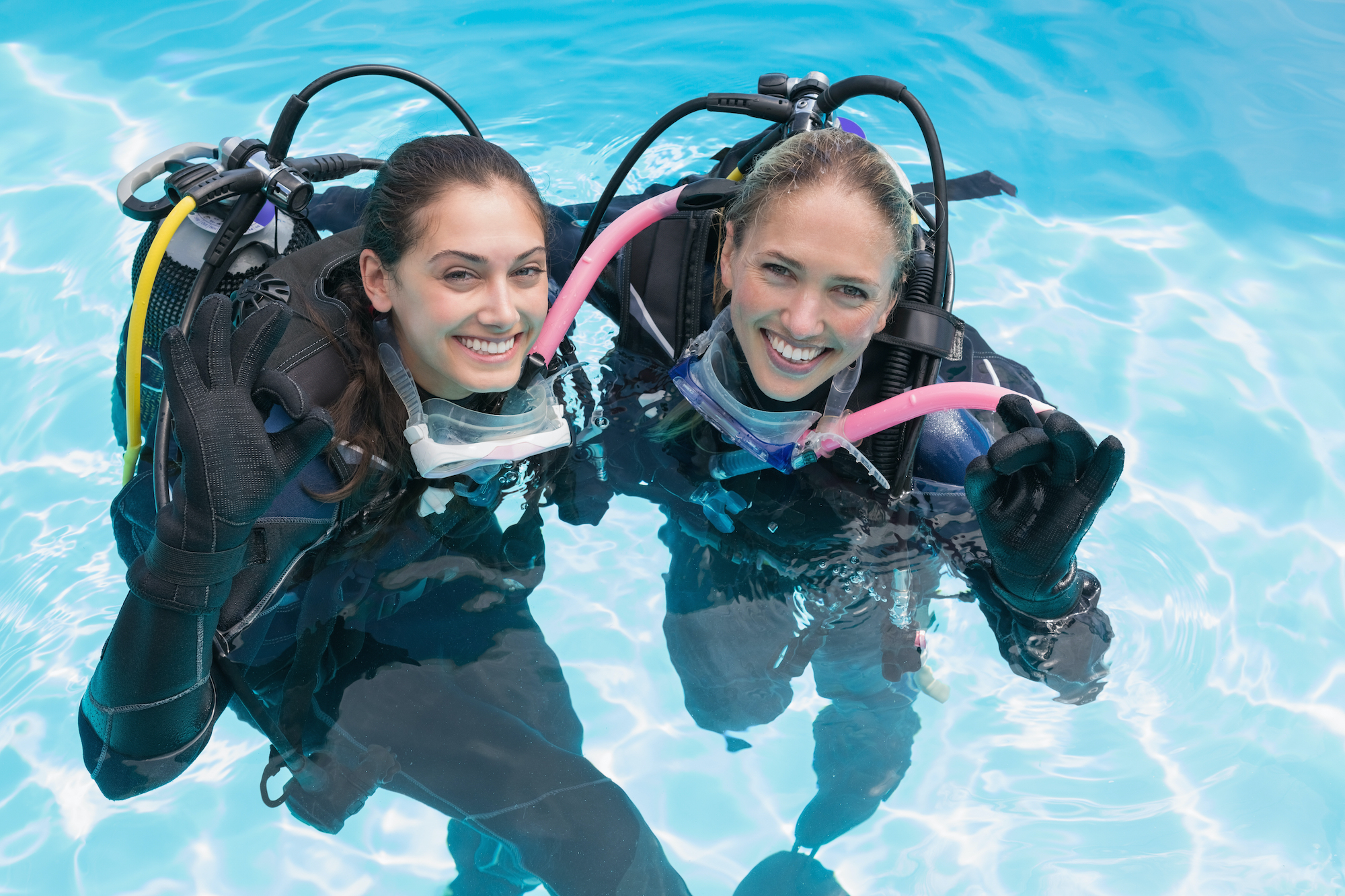If you are planning your next dive trip or local diving adventure but haven’t been in the water for a while, you may want to consider taking the PADI ReActivate® scuba diving refresher program. Taking a scuba refresher is a great way to refresh your dive theory knowledge and basic dive skills so that you can feel confident and prepared when you next go diving.
PADI ReActivate has two components:
- Knowledge development, which can be completed online with PADI eLearning®
- And an optional (but highly recommended) in-water session to review your dive skills.
In this blog, we help you prepare for a scuba diving refresher with a checklist that covers before, during, and after your PADI ReActivate program so you get the most out of both your PADI refresher theory and in-water skills session.

Pre-PADI ReActivate Scuba Diving Refresher Checklist
Before taking the PADI ReActivate program, there are several things you can do to ensure you are properly prepared. Here’s a scuba refresher checklist to work through before you begin:
- Join PADI Club! If you haven’t joined PADI Club yet, now is the time to do it. PADI Club membership gives you FREE access to the online portion of the PADI ReActivate program! As a member of PADI Club, you’ll also receive access to some incredible benefits, including 20% off most PADI eLearning courses, access to DAN’s Prepared Diver Course, exclusive PADI Club eCards, 25% off a new certification card and a free subscription to Scuba Diving Magazine. Plus, 5% of your membership fee goes to PADI AWARE, so you can help to protect what you love from home.
- Sign up online for PADI ReActivate eLearning. You can use this link and get started right away. PADI eLearning allows you to study in the comfort of your own home and at a pace that suits you. You’ll find that the online component is highly interactive and includes videos and scenarios to provide you with reminders and to check your understanding.
- Contact your local dive center and book your in-water session. This means that you’ve given yourself a date by which to complete your eLearning component, too!
- Dig out any scuba gear that you own and intend to use. If you haven’t been diving in a while, it’s likely your gear has been stored away. Check all items carefully for any signs of deterioration. You may want to have some items checked over and serviced by a professional. When checking your gear, make sure you check the battery level in your dive computer, too. The batteries don’t last forever!
- Locate your logbook and certification cards. Your dive center will want to see your cards, and you can make a note in your logbook of your PADI ReActivate in-water session.
- Complete your PADI ReActivate eLearning, take a quick review, and save or print your PADI ReActivate eLearning Certificate. It’s a good idea to email this to your chosen dive center, so they have it in advance of your in-water session.
- Assess your physical fitness. Ask yourself if you are physically fit for diving. Are you in reasonable shape? If you are not feeling 100%, it might be time to hit the gym to build up strength, or if you have more serious concerns, visit your doctor for a medical checkup. If you decide to visit your doctor, take a copy of the PADI Diver Medical Participant Questionnaire and Physician’s Evaluation Form with you and complete the questions in advance.

In-Water Scuba Diving Refresher Checklist
If you are wondering what the optional, in-water component of the PADI ReActivate program entails, here’s a checklist for what you’ll cover under the guidance of a PADI Professional. Keep in mind that the PADI ReActivate dive skills session is prescriptive, meaning that your PADI Pro will tailor-make the review to your specific needs. This is just one example of how the session may run.
- You will begin the session with a bit of an interview with your PADI Pro, who will check your logbook and ask you questions like these:
- How many dives have you made, and in what conditions and environments?
- When and where were your last dives?
- What skills do you want to practice?
- How did your last dives go? What would help you to improve them?
- Are you feeling confident about diving, or do you have some nervousness or anxiety? If so, why?
- What are you hoping to accomplish during the PADI ReActivate in-water session?
- Next, the Pro will watch you set up your dive gear. It’s easy to forget how things fit together – especially if you are using rental gear which may be a different brand to what you’ve used previously. Remember that the PADI Professional is there to help, so don’t be afraid to ask about anything you are unsure of. If you are struggling to recall what goes where, you can also ask your PADI Professional to give you a demonstration to jog your memory.
- Pre-dive safety checks (a.k.a. buddy checks) come next. Can you remember BWRAF (BCD, Weights, Releases, Air and Final okay)? Try using the saying ‘Breakfast With Rice And Fish’ or ‘Big Whales Really Are Fast’ as an easy way to recall the correct order. Your PADI Professional may also have some other examples to help you!
- During the review session on ascents and descents, you’ll be reminded of the procedures for both the five-point descent (S-O-R-T-E-D = Signal, Orientation, Regulator, Time, Elevate the BCD hose and Descend) and the five-point ascent (S-T-E-L-A = Signal, Time, Elevate the BCD hose, Look up, and Ascend) over deeper water.
- Next up is mask clearing and mask removal and replacement. Even the best-fitting masks will leak from time to time. It only takes a stray hair underneath the silicone seal, or even just smiling to cause water to enter your mask. For this reason, you’ll review the mask skills that you covered during your PADI Open Water Diver course, including a partial mask flood and clear, full flood and clear, and finally mask removal and replacement.
- Buoyancy control is essential for diver safety and comfort, so you’ll review your buoyancy skills, including neutral buoyancy, hovering, and swimming underwater while maintaining your buoyancy. If you are unsure of the amount of weight you need, this is a great opportunity to ask your PADI Professional to assess your weights and weight placement.
- Emergency Weight Drop practice is an important skill for divers to review to ensure they can obtain positive buoyancy at the surface in an emergency. You’ll practice, at the surface in water too deep in which to stand, with a deflated BCD, using the weight system’s quick release to pull clear and drop sufficient weight to become positively buoyant.
- The final skill set you’ll cover is Alternate Air Source Ascents. This ensures that you are well prepared should an out-of-air situation occur. During this skill, you will take your buddy’s or PADI Professional’s alternate air source and ascend. You will also act as a donor with your buddy or PADI Professional taking your alternate air source and ascending.
- Based on the pre-dive discussions and your PADI’s Pro’s observation of how you complete the skills above, he or she may have you practice additional skills. Don’t hesitate to use this time to ask for more practice or review if you feel you would benefit from it.

Post-PADI ReActivate Checklist
Once you have completed your PADI ReActivate program, including both the knowledge review and dive skills refresher, you’ll receive an updated certification or recognition card showing your date of ReActivate completion. Now, it’s time to put your newly refreshed skills to good use and go diving!
Here are some useful links to look at when deciding where to go diving next:
- Check out PADI Travel for destinations around the world. PADI Travel has information about PADI Dive Centers, Resorts and Liveaboards all over the planet. Plus, you can book your trip directly online.
- Get inspired by this blog about the 10 Best Dive Sites in the World.
- Find great value flights by using one of these 12 Best Websites for Booking Flights at the Cheapest Prices.
- Organize your travel insurance with DAN. If you are taking the PADI ReActivate program intending to traveling overseas, make sure that you have travel insurance in place to cover you for diving. DAN provides a range of comprehensive insurance options, including coverage for professionals. DAN’s policies are designed specifically for divers, so you can rest assured that your policy fits your needs.
Get Started!
Feeling inspired? Don’t delay and get started on your PADI ReActivate eLearning today.
PS – In case you missed it above… You can get the PADI ReActivate eLearning for FREE when you join PADI Club. Click here to tap into this and other exclusive Club benefits now.






